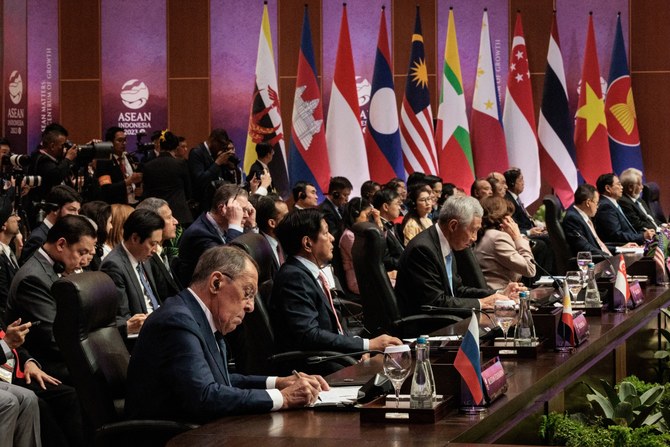
Saturday’s meetings of OPEC+, a three-and-a-half-year alliance of the Organization of the Petroleum Exporting Countries (OPEC) with their 10 non-OPEC countries led by Russia ended as expected.
The group decided to extend the top level of the historic April cuts for a further month through July 31. The new number is 9.6 million barrels per day (bpd) rather than 9.7 million bpd, because Mexico will end its 100,000 bpd. This is still 1.9 million bpd above the cuts initially scheduled for July.
In April the 23 countries had agreed on easing the historic 9.7 million cuts on a sliding scale to 7.7 million bpd July to December 2020 and then 5.8 million bpd through April 30, 2020.
The communique acknowledged the 1.2 million additional cuts Saudi Arabia, the UAE, Kuwait and Oman had undertaken in June as well as further cuts by Canada and Norway. The extension of the extra cuts by the Gulf Cooperation Council (GCC) members looks set to end after June as a sign of markets starting to rebalance.
The road to the agreement was not without its obstacles, as Russia and particularly Saudi Arabia intended to curb down on noncompliance among member countries. The biggest culprits were Iraq, Nigeria, Kazakhstan and Angola collectively underperforming by more than 1 million bpd, bringing compliance down to 77 percent. Iraq was by far the biggest laggard among the underperformers.
The communique states that those countries are willing to make up the amounts by which they underperformed during July, August and September. Nigeria’s Oil Minister Timipre Sylva went on record to say that his country “subscribed to the concept of compensation by countries who are unable to attain full conformity,”
OPEC+ clearly has done the oil industry at large a big service with its swift and decisive action.
Cornelia Meyer
Both Russia and Saudi Arabia will watch compliance with eagle’s eyes as the Joint Ministerial Monitoring Committee (JMMC), which is chaired by Saudi Energy Minister Prince Abdul Aziz bin Salman and his Russian counterpart Alexander Novak, will now meet on a monthly basis.
This is a big win for OPEC and especially for Prince Abdul Aziz, who had been advocating extending the cuts and was adamant about compliance. He has a good point in that it is unfair for Saudi Arabia to make up for noncompliance, which is costly not just in terms of revenue but also in terms of market share.
OPEC+ took the only responsible action in extending the first phase of the cuts to balance markets amid global inventories having built up to around one billion barrels. While economies come out of lockdown and especially China’s consumption is nearing pre-pandemic levels, product inventories are still high — especially of diesel and jet fuel. Diesel is an important indicator of economic activity.
OPEC and the IEA forecasted the demand contraction for 2020 between 8.6 and 9.1 million barrels a day. That may be less than the drastic 30 percent contraction from January levels we saw in April, but it is still a historic decline of demand. It will be hard work to reduce these record inventories. The speed will depend on the shape and speed of the global economic recovery. In the words of Prince Abdul Aziz: “We have grounds to be cautiously optimistic about the future. But we are not out of the woods yet.”
Saturday’s meeting underscored that neither Russia nor Saudi Arabia wanted to see a repeat of their short war for market share, which combined with the economic downturn had a devastating effect on oil markets. It led to the April meeting when the current regime of cuts was agreed on.
On Friday, US President Donald Trump went on record to thank Russia and Saudi Arabia for helping to save the US energy industry. He had played a role in conversations leading up to the April deal and also held phone calls with Saudi Crown Prince Mohammed bin Salman and Russian President Vladimir Putin before this meeting.
After the meeting US Energy Secretary Dan Brouillette tweeted: “I applaud OPEC-plus for reaching an important agreement today which comes at a pivotal time as oil demand continues to recover and economies reopen around the world.”
While so much praise is good, producers and analysts will have to watch the US shale space. As prices rise, some shale production will become profitable again and shut-in rigs in the US will come on stream one by one. The speed of this development will depend on the trajectory of the oil price. Libya may prove to be another wild card depending on domestic political developments.
Brent reacted well to the outcome of the OPEC+ meeting gaining 5.8 percent and reaching $42.3/b by early morning CET on Sunday. At the same time WTI approached the $40 mark with $39.55, which is a far cry from the minus- $37 when the May futures contract was rolled over on April 20.
OPEC+ clearly has done the oil industry at large a big service with its swift and decisive action. The question is now how sustainable the rally is — and that depends both on demand and how much more incremental supply will hit the markets due to higher oil prices.
Cornelia Meyer is a business consultant, macro-economist and energy expert. Twitter: @MeyerResources
Disclaimer: Views expressed by writers in this section are their own and do not necessarily reflect Arab News" point-of-view












